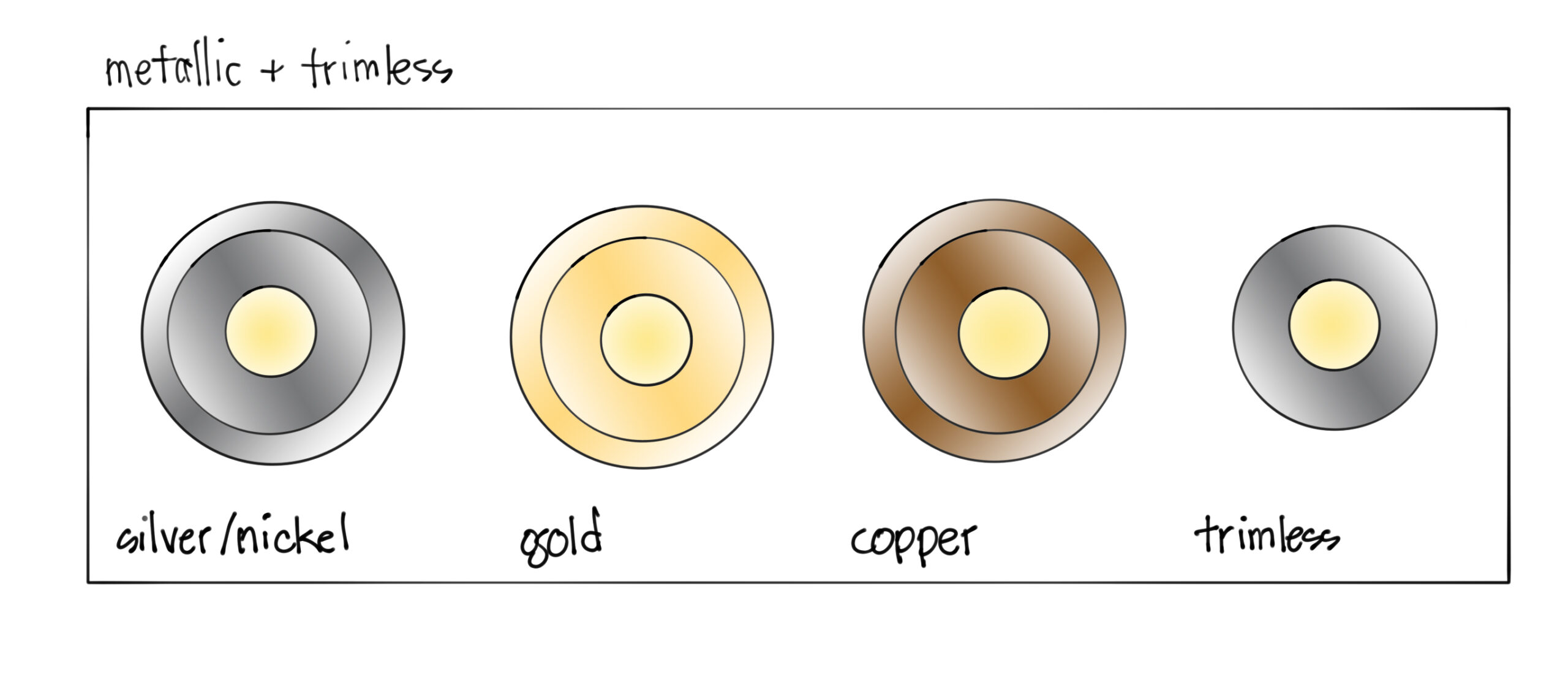Recently a reader posed a tough question following one of my articles on Houzz.com:
“I am often stumped by the variety of sizes and baffle colors of recessed lights. Any info regarding how to choose?”
Hmm. I had to think about that one, as I often make choices subconsciously from my own experience and preferences. How could I share advice for a project I didn’t know, for a homeowner I had never met? After thinking about the question for awhile, I came up with the following guide. I’d love to hear what you think!
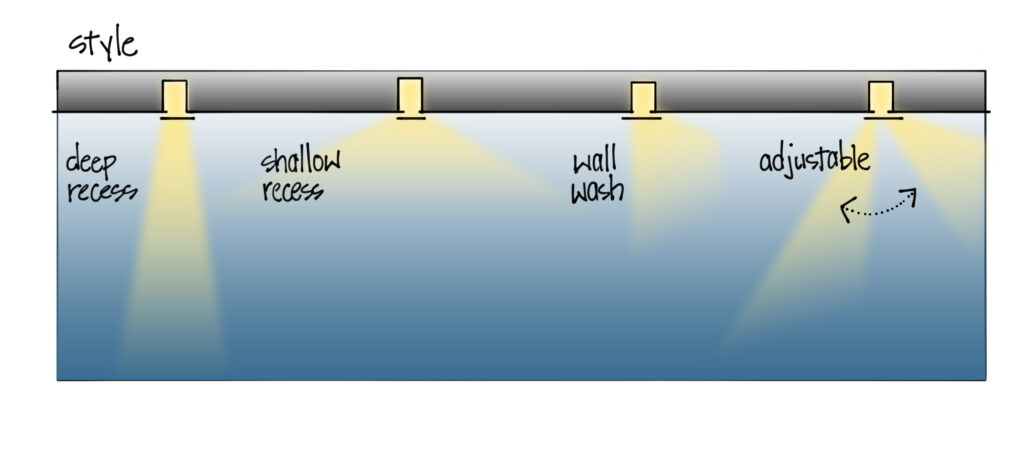
- Style: what kind of light do you need? As a designer, I always start with what I want the light to do rather than how I want the fixture itself to look. If I want light on my walls, for instance, I’ll use a wall wash trim. If I need a good spread of light in a closet, I’ll use a shallow recessed trim that has a wider spread. If I want to hide light fixtures on either side of a dining room chandelier, I prefer more discrete fixtures that have a deeper recess. And if I like to change my mind, I go for trims that allow me to adjust/aim the light at different places in the room. When looking for adjustable trims, keep in mind that “gimbal-style” trims that are like modern eyeball trims are decent for wall washing but may create excess glare in other applications. I prefer deeper recessed adjustable trims that hide the light source.
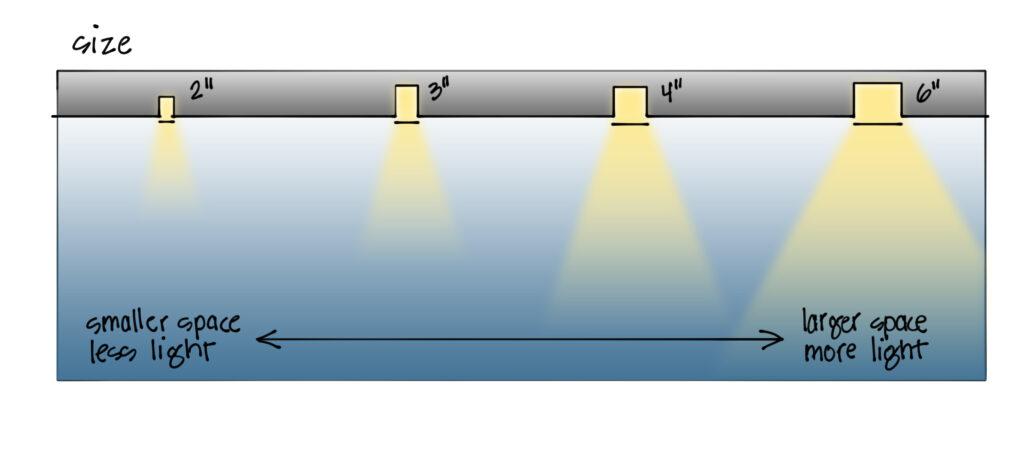
- Size: how much light do you need? This can be pretty technical for professionals and involve 3D lighting calculations and lots of math. But the basic rule is that if you need more light, you’ll want a larger trim size. Why? Well, imagine pushing all the light the whole world needs out of 1″ downlight. It would be so bright that you would literally go blind if you looked directly at it. We have one of those outside- called the sun- and it hurts our eyes! These days you can push a lot of light out of a very small aperture, but keep in mind that it could get very bright. There are no good rules of thumb here, because ceiling height, beam spread, wall finishes, tasks, daylight, other lights in the room, etc. can all affect the equation. A safe choice is to stick between 3-4″ in diameter. If you only need a little bit of light in a hallway or niche, feel free to use 2″. If you need a ton of light in a huge room, consider 6″.
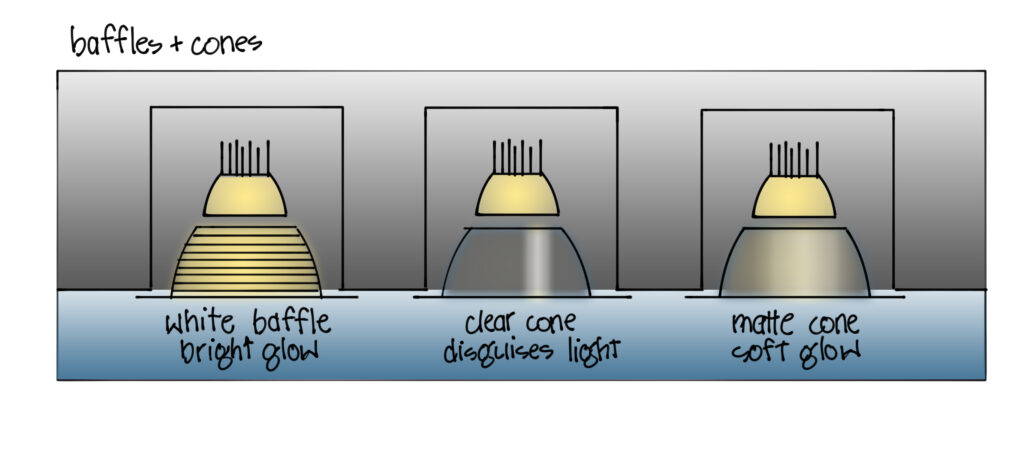
- Baffles & Cones: do you have other lights in the room? If you use just downlights in a space, you may end up with the cave effect (for more on the pros and cons of downlights, check out my article on Houzz.com). If I have a space without other lights (like lamps, wall sconces, pendants, accent lamps, etc.), then I usually lean towards a white baffle recessed trim. That gives me a nice glow at the ceiling that helps the room “feel” bright while still pushing most of the light to where I need it. But if the room has accent lamps, table lamps, or pendants, I might recommend something with either a clear or haze silver cone, which softens the light and draws less attention to itself. There are even black metallic cones which hide the light very well, but I tend to avoid them because they don’t look as nice when turned off during the day. A logical extension of this theory is to buy downlights with fancy glass thingees (that’s a technical term describing anything extra added below the trim) that shine, but I personally think these call just a little too much attention to themselves. Not many want to look at a downlight.
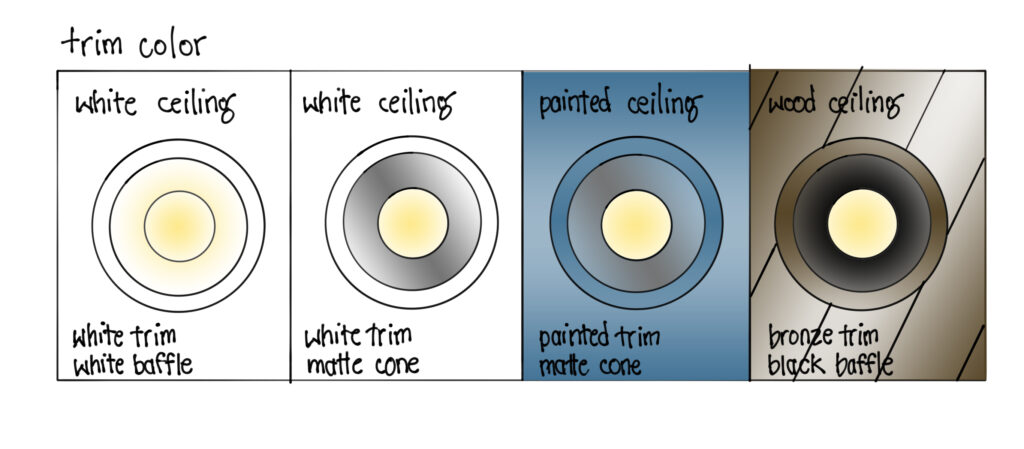
- Trim Color: what is your ceiling? I aspire to wood-covered ceilings, but most of my home is just white painted drywall or plaster…nothing too exciting. That makes it easy to choose a downlight trim, because I choose a white trim that blends and almost disappears into the ceiling. Again, the white baffle trim or white trim with haze silver cone can be a solid, inoffensive choice. Many trims are paintable, so if you paint your ceiling blue, you can paint your trim to match. If you have wood, metal, or some other enhanced ceiling finish, you might consider trims that coordinate or compliment the ceiling material.
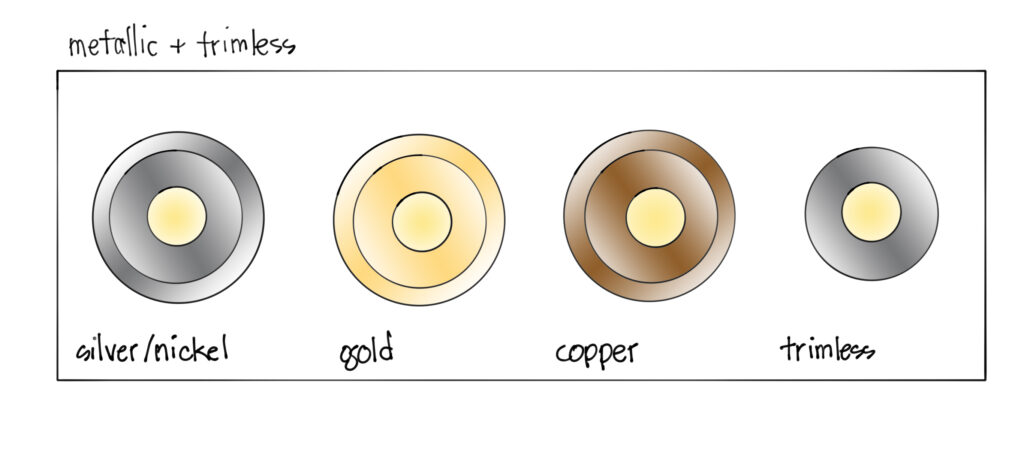
- Metallic & Trimless: What are the special features available? Sometimes, when there is a lot of one kind of metal in a room, I will recommend using a metallic trim to match. Let’s say your ceiling is wood, three of your walls are brick, and you have a beautiful copper wall covering on one side. Why not compliment the wood with a copper trim, that also coordinates with the copper wall covering? Sounds good to me! Do you want the downlight to disappear even more? There are even “trimless” models that are plastered into the ceiling, eliminating the flanges so that you just see a small clean circle. These are elegant and great for drywall/plaster ceilings, but require quite a bit more installation time, effort, and investment.
For me, the bottom line is that I want my recessed lights to be flexible, fairly un-noticeable, and look decent during the daytime when they are off. That means my most common recommendations are 3″ trims with white baffles and 3″ trims with haze silver reflectors. And I prefer to spend money on fixtures that are also pretty to look at, like table lamps and wall sconces, so I stick to less expensive downlights. But when I get that copper ceiling….
